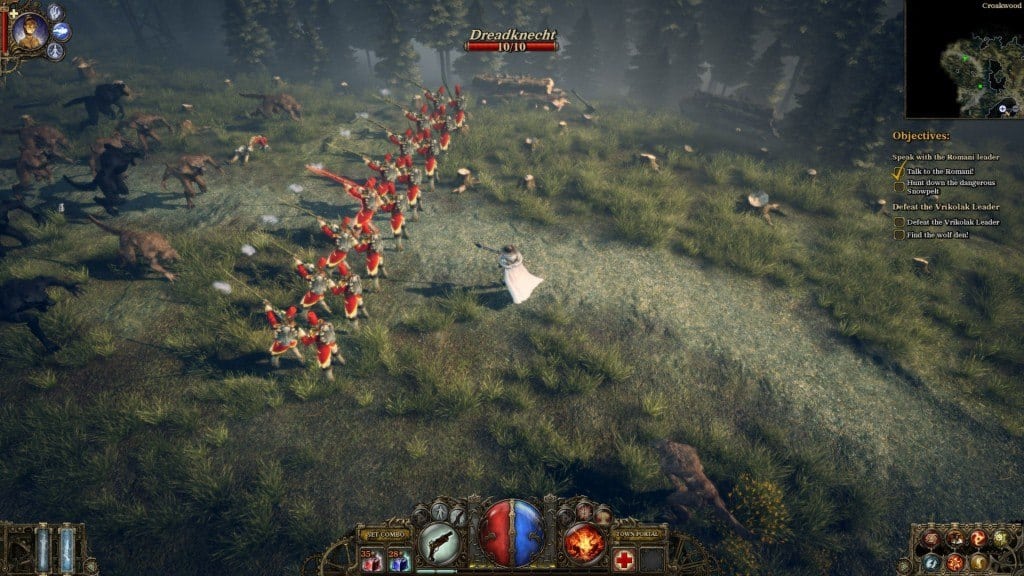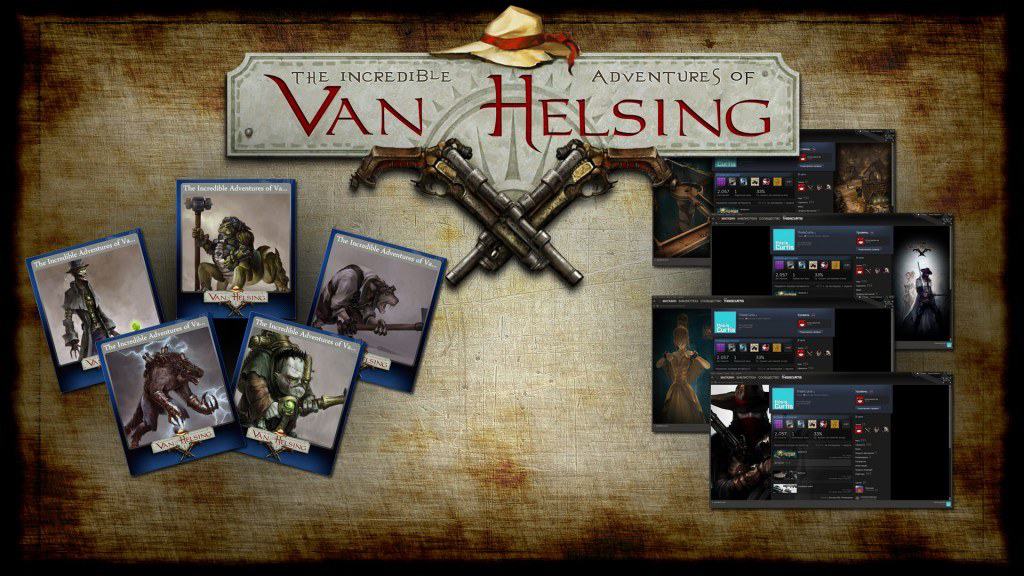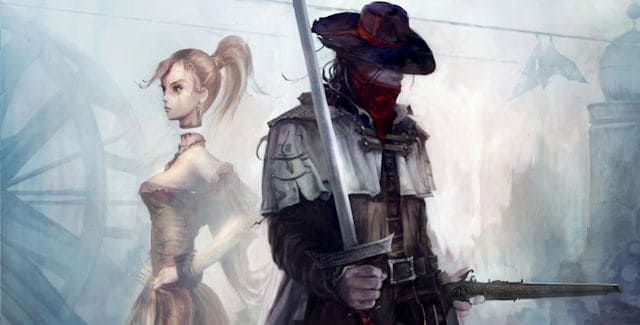Developer Neocore Games came out with The Incredible Adventures of Van Helsing this year. Reviews were mixed, but welcoming overall, netting it a 72 aggregate score on Metacritic.
After a string of supported adjustment to the game, they went on to release an all-encompassing pack. Along with that, they announced that there would be The Incredible Adventures of Van Helsing II.
It looks like these people are staying really busy, so we thought we’d drop them a few questions, detailing their road so far and where they’re headed. Answers were fielded by Orsolya Tóth, community manager for Neocore games.
What was the original intention of releasing Van Helsing? What games were inspirations for the title and how did you shape your project to turn out?
Orsolya: After developing solely strategy games for years, it was refreshing to create something different and we really enjoyed the challenges of this new genre. Obviously the Diablo and the Torchlight series made a big impression on our team, and we also drew inspiration from Bastion and the Orcs Must Die games.
The gameplay of The Incredible Adventures of Van Helsing is quite similar to other [action roleplaying game] ARPGs out there with all the hacking and slashing and a lot of looting on the way, spiced up with the option to develop your character but the setting is different and we were hoping that our game can bring some fresh air in this genre.
Which I think we have managed after all with our ghostly companion, Lady Katarina’s witty humour, the snappy dialogues between the main characters, all the pop-cultural references, the steampunk-gothic-noir setting, which may sound a bit weird at first but it totally works, and the two tower defense sequences add more variety to the gameplay.
Van Helsing is a slight break from the real-time strategy games (RTS) like King Arthur you’ve previously worked on. What are the things you could take from that into the new project and what elements were surprising or unforeseen challenges that you didn’t anticipate, going into Van Helsing?
Orsolya: Although our previous strategy titles had some RPG elements too, they were quite different in terms of gameplay and development, so the biggest challenge was definitely the new genre.
Developing levels for a game with isometric top down view was a bit strange for us at first as we were not used to it, so we had to design the game maps in a different way to present the environment.
Creating the animations was tricky too: we used to rely a lot more on motion capturing for our strategy games but now with the rather willingly exaggerated movements in Van Helsing we had to use more hand-drawn animations for the game – although we could rework some mocap basics for the main character, for the running animations or a few fighting moves.
Another big challenge was the enemy [artificial intelligence] AI.
With our strong ties to the RTS genre, at first we tried to force an advanced enemy AI into Van Helsing and create monsters that used tactics, evaded attacks with good dynamics, stepped out of the range of [area of effect] AoE spells or went around the zone of damage. It was simply not fun that way, so we had to reorganize our thoughts and remind ourselves that this is a different genre with different fun factors.
We decided to stick to the traditional monster groups of the genre for now but I must admit that we did not give up entirely on the thought yet: in the sequel we’d rather think of the AI as an advanced unit ability.
We plan to add some monster groups who will have the special “ability” of being cleverer than others – combining their skills, for example. In the first game we only used this for some boss fights but in the sequel we’ll see this more often.

When it launched, how was criticism for Van Helsing? What parts did you feel were its strongest selling points and how did that work for critics?
Orsolya: The most praised features were definitely Lady Katarina, the game’s witty humour and unique setting, the Rage and PowerUp system, the graphics, all the pop-cultural references, the monster design and the tower defense sequences of the game.
Most critics spoke very highly of these features and they really enjoyed the game, although we got some remarks about the multiplayer issues after release and the lack of replayability and no endgame content.
Now the game has a new netcode so finally we could expand the multiplayer features and add [player versus player] PvP mode beside the co-op and we added monster respawn, 30+ level scenarios and the Never-ending Story to fulfill the need for the endgame content.
Since then, you’ve said yourself that the game has changed a lot with fan feedback. What are the things you feel were a priority and how did you view fan feedback as a whole; meaning, what comments did you feel were important listening to and what suggestions did you think were less of an issue?
Orsolya: We always tried to do our best to listen to our community and show appreciation for their feedback, even before the game’s release.
Hey, we also changed our main character because our fans didn’t like our first vision of Van Helsing. And ever since the game is out, we are constantly monitoring community feedback and improving the game with their help.
For example, the basic idea was to create only one class and let players find their own path on the skill tree and thus create very different monster hunter set-ups. But it turned out that they want different classes to choose from before embarking on their adventure, so we started working on two class [downloadable content] DLC.
The issues with co-op were on the top of the list as well, and after some tinkering we decided to use a whole different netcode for the multiplayer.
Many of our fans wanted to see Lady Katarina even more engaged in combat, so we created a DLC that adds a new skill tree to the bloodthirsty lady, filled with destructive spells.
If a critique seemed legit we always tried to find a solution or if something was missed from the game by a significant number of players, we wanted to find a way to add it to the game.
We never really missed a post on our forums, so I think it’s safe to say that the feedback from our community really matters to us.
Do you feel like the game is starting to find its place within the gaming world?
Orsolya: Absolutely. With the new features that were patched into everyone’s game recently, I think we finally found the right track for the game.
Our fans do seem to appreciate that we actually pay attention to their ideas and needs, while newcomers can enjoy the benefits of previous suggestions and also join a friendly conversation on our Forums.

Looking to a Van Helsing sequel, what learning experiences do you feel will benefit the title and what new challenges do you think you can strive for? How do you think you’ll complete a new list of tasks to bring a compelling follow-up to the game?
Orsolya: We will definitely keep on listening to community feedback and we have a few surprises in store for the sequel. For example we enhanced the game’s engine a bit to create more stunning and dynamic weather effects, which are very useful for game design purposes as well.
Or we’ll have a cursed forest where the whole scenery, including the weather, the lighting and even the plants will change dynamically as we gradually remove the curse. All three classes will be available in the sequel’s base game, so everyone can try various methods of the monster hunting profession.
We are planning the endgame content now from the very beginning and we’ll do our best to engage our players, as long as they wait for the final part of the trilogy, by updating the Scenario mode on a regular basis and possibly adding new multiplayer game modes too.
We’re also in the middle of reworking the tower defense sequences in the story, to make it more comfortable and interesting with more traps and to integrate it better into the game, making it optional at the same time.
We also decided to improve the loot system and create a stronger story with decisions that affect further gameplay. It will be fun!
Has working on a new style of game inspired you to create a pipeline for more diverging projects?
Orsolya: It did inspire us, yes. But I’m afraid we need to leave this to the future as I cannot reveal any of those ideas yet. Right now we’re focusing on creating the second and then the third part of this incredible adventure and then we’ll have some surprises for you, I promise.
